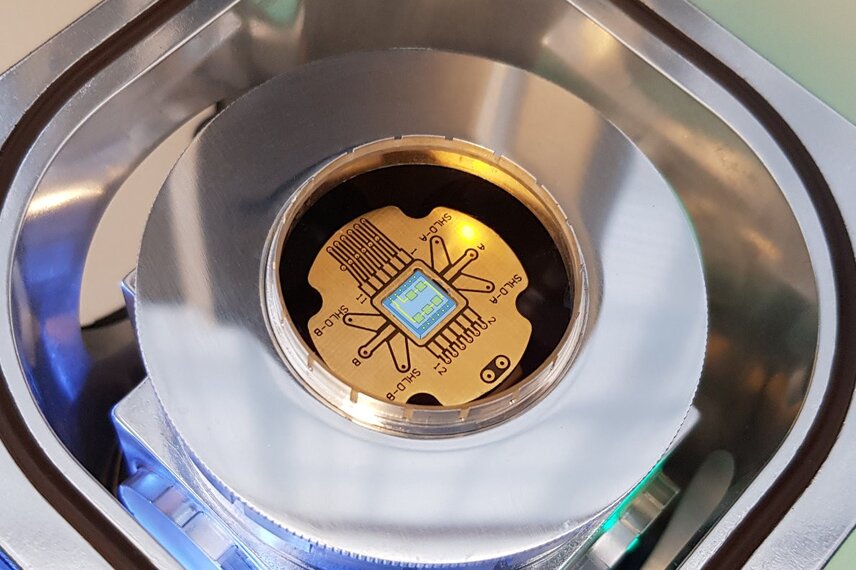
Quantum technology and ultrafast computers using superconductors are no longer a vision for the far-off future, but some of the hottest topics in current electronics research. One major challenge remains: The electronic structures used to connect and work with the quantum parts of the quantum computers, such as qubits on chips, are often far bigger than the qubits themselves. Researchers at Fraunhofer IZM have innovated a process that could fit twice as many connectors on the same surface than conventional technology thought possible. Their idea of using indium bumps will now be used to optimize the control electronics in the quantum computers and devices of the future. A dedicated cryometrics lab was set up in Berlin to test the performance and potential of their designs.
The quantum world holds much promise in many practical fields, from computing or sensor technology to quantum communication. But this promise will only come true once working and, above all, genuinely scalable production technologies are available. For a quantum computer to run calculations and accelerate actual applications, it needs additional qubits that it can work with – hundreds of thousands or even millions of tiny physical bodies. These qubits are connected with each other via superconducting circuits, which have hardly any measurable electrical resistance once they are cooled down past a certain threshold.
But reading and manipulating qubits needs an electronic switch with sufficient port density, and it needs to be thermally decoupled to stop its own heat signal from destroying the quantum entanglement of the qubits. What theorists call quantum supremacy – the point at which quantum computers outperform the most powerful conventional computers – can only be achieved with high numbers of qubits. Researchers expect this number to range in the six or seven figures, but the actual number of qubits that could be placed on a semiconductor chip is generally limited by the port density. Current technology has been stuck at a pitch, i.e. the distance between individual contacts, of 15 micrometres for several years, but now the research team from Fraunhofer IZM has achieved the seemingly impossible: With galvanic deposition of indium, they created a pitch of less than 7.5 micrometres.
As the system needs to be kept at a temperature of 20 milli-Kelvin during operation, its electrical connections can only give off minute amounts of thermal energy. This is what superconducting materials were created for. The IZM team managed to deposit and structure superconducting niobium and niobium alloys, the materials used for contacting vias through several layers of substrates, in socalled interposers. The end product of their work is an extremely low-loss circuit carrier that can connect entire qubit arrays in real time and integrate them into highly dense, but scalable systems for quantum computing.
Fraunhofer IZM set up a dedicated cryometric lab in Berlin as the place where this fundamental technology could be developed, suitable materials tested, integration concepts optimized, and superconducting interconnect technologies trialled for cryogenic applications. The new lab facilities let the researchers test, characterize, and evaluate electrical circuits and make progress with integration technologies for extremely low temperature scenarios. Individual circuit components are cooled down to an unimaginable 3 Kelvin to analyse their resistance properties and draw conclusions about their electrical performance and the reliability of the vias, redistribution layers, and control systems at cryo-temperatures. Projects are under way to explore new packaging and interconnection technologies for integration under cryogenic conditions, and first measurements have already produced results.
Contact: Dr. Hermann Oppermann, Fraunhofer Institute for Reliability and Microintegration IZM
hermann.oppermann@izm.fraunhofer.de
From June 16 to 19, 2025, the 19th ISEC took place in Erfurt, Germany. The event brought together around 100 …
The NEPOMUQ research project, a collaboration between AMO GmbH and the University of Wuppertal, focuses on the development of integrated …
The demand for electronics that operate at low temperatures is growing and becoming ever more important, especially for applications in …